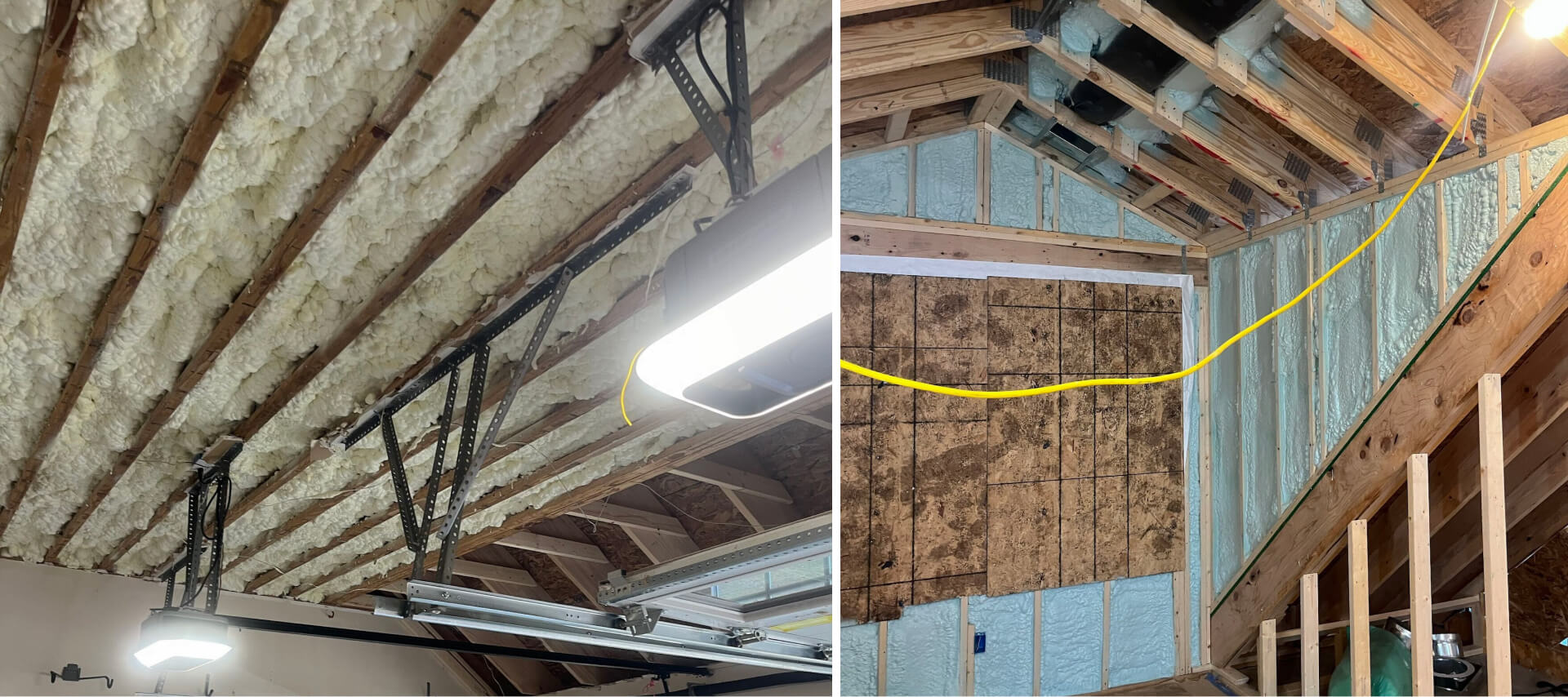BLOG

The first step in optimizing insulation efficiency is air tightness. Proper sealing before concealment inspection is vital. Sealing larger voids with foam (orange foam in the photos), caulking joints in headers and studs, and even caulking where the wall plate meets the concrete slab can significantly reduce air leakage. The windows are sealed with low-expansion foam to prevent frame distortion.


The next step in the process is conducting tests to make sure the home is properly sealed with no gaps. A blower door test, using pressure from a specialized fan, identifies any air leaks effectively so that they can be filled. These measures ensure a well-sealed home, crucial for energy efficiency. The home pictured in these photos will test well, as all of our homes do.

The next step is to insulate the home with spray foam insulation. Closed cell spray foam is a dense, rigid foam with an impressive R-value of R-7 per inch. Its density makes it perfect for stud & joist cavities, allowing higher insulation in minimal space. For instance, just 3” of closed cell foam achieves an R21, meeting or exceeding exterior wall energy code requirements in a 2x4 stud cavity. Its impermeability to air, vapor, and moisture makes it ideal for areas prone to moisture exposure, like masonry basement walls. Additionally, its rigidity adds structural integrity to the home.
In contrast, open cell spray foam is lightweight and permeable, with an R-value of 3.7 per inch. It's suitable for 2x6 exterior wall stud cavities, offering superior insulation compared to fiberglass. Open cell foam is cost-effective and great for large application areas like roof decks and garage ceilings. It excels in sound reduction and, at greater application depths, becomes less permeable.
Combining batts and foam in roofs and hard-to-reach parts of exterior walls optimizes insulation. Clean construction practices, marked studs for future reference, and meticulous inspections prepare the home for the final stages of construction. Every step of the process is done carefully and neatly.
BLOG